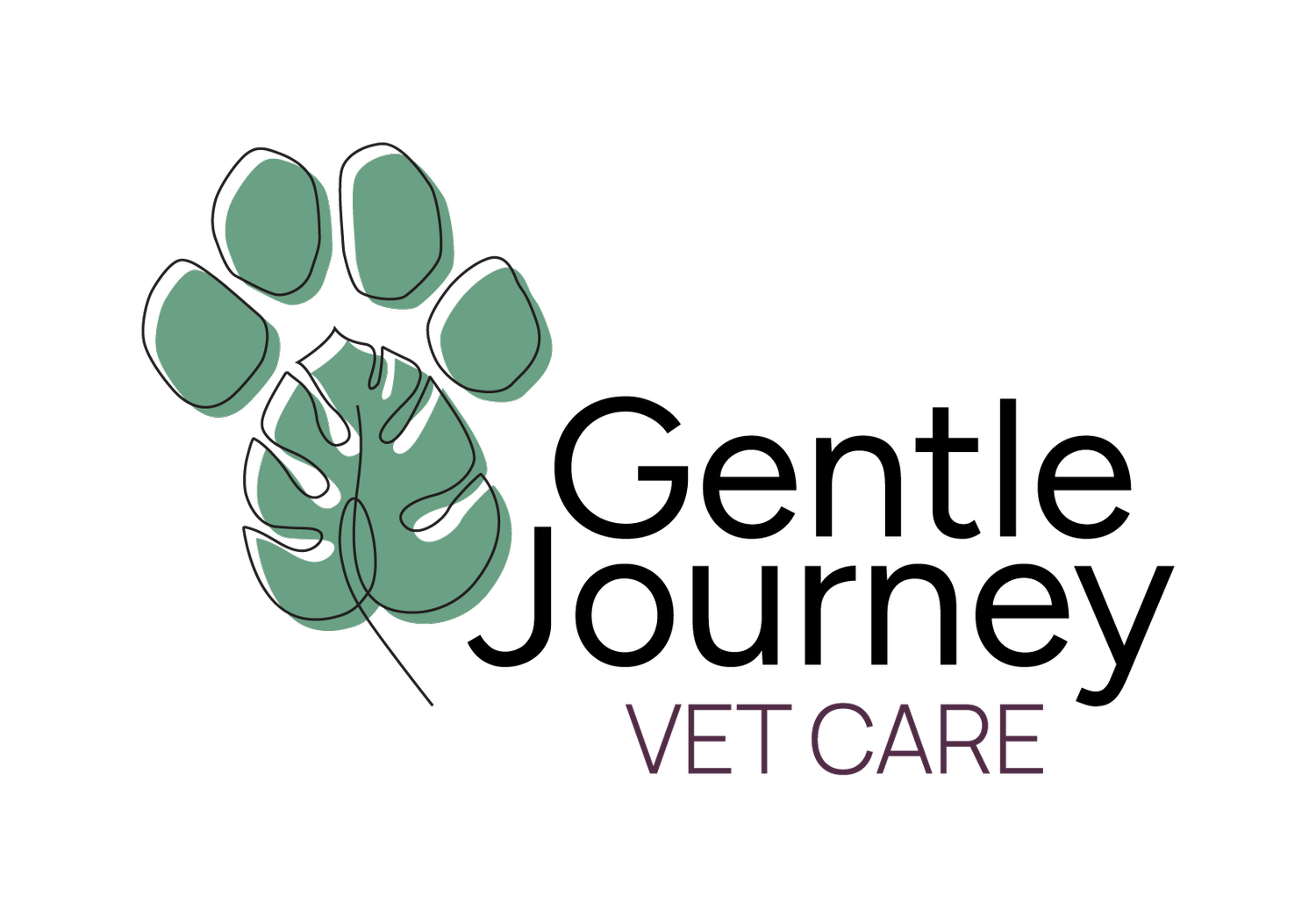Saying Goodbye with Compassion: A Guide to In-home Euthanasia
When you’re ready to say goodbye via in-home euthanasia, we are here to support you. The process may be easier if you know what to expect. Here is some information on the process of in-home humane euthanasia.
Understanding sedation
If your pet becomes stressed in the presence of our team or with medical handling, we may ask you to pre-medicate the night before and prior to our arrival. This will minimize your pet’s anticipation and concern with our team’s arrival.
For companions who become stressed with gentle restraint or prefer not to be handled, we will consider oral or intramuscular sedation. This will allow for low-stress sedation with minimal to no handling.
How does my pet die during euthanasia?
Your pet will be given a potent cocktail of medications including pain medication and sedatives given into a muscle with a small needle. This prevents the need for significant restraint. Once given, we wait calmly for your pet to fall into a deep sleep. We plan to meet your pet wherever they are, with no need to move them from their favorite spot or hiding spot.
Once fully asleep, the second injection is given once your pet has no response to stimulation. For dogs, this is typically given into a leg vein, using a small needle and a wrap around their leg to more easily access the vein. For cats, the second injection is typically given near a general blood supply with the veterinarian using palpation, or feeling the body, to find a location.
Once the second injection is given, their heart and lungs slow to a stop, passing away peacefully. The first injection takes 2-5 minutes to take effect and the second takes effect within 15 seconds to 5 minutes. Overall the process is minimally stressful and peaceful.
Our techniques are based on the most up-to-date protocols providing minimally stressful techniques. Dr. Stephanie is a certified veterinarian with Companion Animal Euthanasia Training Academy.
How long do I have with my pet and what can I expect?
Families can choose to spend some time with their pet during the appointment. Some choose to have some time after the first injection and others choose to spend time after the second injection when the pet has passed.
Both injections typically take no more than 15 seconds, and overall, the procedure is very peaceful, akin to falling asleep—which is where the euphemism “put to sleep” comes from.
During or after the procedure, we rarely observe urination, defecation, muscle twitching, or breaths/gasps. Due to their anatomy, the eyes may remain open.
What happens after they have passed?
After your pet has passed, you’re welcome to spend some time with them. If you prefer to spend an extended period of time or even a night with them, we can schedule a time to have your pet collected when you are ready. This may be the time you elect to collect their personal items such as clothing or collars, and we can assist in collecting samples of hair or whiskers, or we can do this prior to euthanasia.
When it’s time for our team to leave, you may choose to walk us to the door or car. On the other hand, some guardians choose to exit the room knowing that the remaining care of their pet is in our trusted hands. Please note, if your pet weighs more than 50 pounds, we may request your assistance, or if you prefer, we can schedule assistance ahead of time to help move your pet.
Our team will then help your pet to their next steps and ensure they are treated with dignity and care through their transportation, cremation and return to you.
If you are struggling with your pet’s care and considering whether it is the right time to say goodbye, we recommend reviewing what defines and measures Quality of Life and talking to your veterinarian.
Gentle Journey Vet Care helps our patients and clients have a dignified and comfortable end-of-life. If you are feeling stuck or have more questions about what in-home euthanasia may be like, please talk to your veterinarian. If you are hoping to bring on palliative care support for your pet, schedule a virtual consultation where we can provide all the information and guidance for you and your pet.


